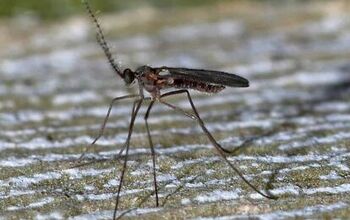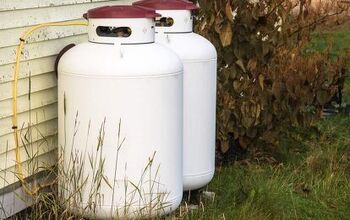Easy Ways To Help Your Spring Garden Thrive

Once the ground thaws and is workable, it’s time to start gardening. Many people associate spring with rejuvenation, and it’s certainly a popular time to prepare a garden. Spring is also a time when many plants bloom and flourish. If you want your spring garden to look colorful and robust, there are several actions you should take as the weather starts to warm up and the days slowly get longer.
To ensure a thriving garden this spring, start plants from seed in your home in late winter, and map out your garden. Once the ground thaws, clean up debris, test your soil, and then start introducing cold-hardy plants. Divide perennials to stimulate new growth, and apply mulch to protect roots. Spray for pests, remove weeds and only fertilize and water as needed.
Planning is key if you want your garden to look great in the spring in addition to the summer and fall months. A beautiful spring garden is easy to achieve as long as you know what to do, and are willing to put in the work in the late winter and early fall. Keep reading to learn all the best ways to ensure a bountiful spring garden full of life and color.
14 Ways To Ensure Your Spring Garden Will Thrive
1. Prune Trees And Hedges
One of the first ways to prepare your garden for spring is to clean up your largest plants. After a long winter, trees, bushes, and hedges wake up from dormancy and are ready to grow. To ensure these plants grow their best and dead branches don’t fall in your garden, pruning is essential. Trim back overgrown branches, and remove any parts of a tree that appear dead or dying. This will make your trees and hedges look better and will provide more light for the plants on the ground below.
2. Draw A Map And Plan For Your Garden
Early spring gardening is all about planning and organization. One way to ensure the garden you envision in your life is the garden you end up having in your yard, is to create a map. A map will help you realize what you need to purchase, as well as what to plant and when to plant it.
Once you draw a map, you can create a shopping list, and then a planting calendar. This will ensure you don’t forget anything, and it will help keep you on schedule.
3. Choose The Right Plants For An Early Spring Planting
Another great and easy way to help ensure a successful spring garden is to plant the right plants for this season. Opt for plants that bloom in the early spring, and ones that can tolerate overnight frost.
This will help ensure a thriving garden in the spring. As tempting as it may be to plant beautiful yet vulnerable flowers in early spring, resist this urge. Plant these more vulnerable plants once there is no risk of frost.
4. Remove Debris And Asses Garden Once It Thaws
Once your garden thaws, before you plant anything, you need to do a bit of outdoor spring cleaning. You must rake the area and remove all dead leaves, twigs, and branches.
This will give you a clean slate to start working on. It also helps prevent fungus and other plant diseases from sprouting in your yard. A clean yard is a happy yard.
5. Inventory And Inspect Your Gardening Equipment
In order to make your spring garden look professional, you need to ensure you have the right gear. You don’t need a full landscaping setup, but it’s important you do an inventory of your supplies, and ensure all your equipment is clean and functional.
Test all your existing gear, and buy whatever essentials you require for the season sooner rather than later.
6. Start Plants From Seed Indoors
If you like to start as many annuals as possible from seed, then start them as early as you can. This usually means starting your plants from seed indoors by a sunny window, especially in colder climates.
If you start plants from seed indoors, once they are a few inches tall, there’s a good chance you can plant them outdoors in warmer conditions. This can give you a month's head start, and ensure there’s lots of growth in your garden before summer starts.
7. Find Ways To Protect Vulnerable Plants
If you are planting some vulnerable plants in your vegetable garden this spring, ensure you do all you can to keep them alive. Some plants, including tomatoes, do well with cages to help them stand tall. Tomato plants and other fruits and vegetables can be covered in netting, so birds and other animals don’t eat them.
Some plants must be covered when it’s cold at night. Tending to your vulnerable plants when they are young helps them grow strong by the time warm weather arrives.
8. Divide And Replant Your Perennials
Many people have perennials in the garden. Perennials like daffodils and tulips sprout up early and help announce the start of spring. If you want these plants to make a more dramatic impact on your spring garden, then divide and replant them. By separating perennial bulbs, you can increase the number of spring perennial flowers in your garden, which in turn will make your spring garden look more colorful than ever.
9. Test The Soil
Before you introduce new plants to your garden, it’s a good idea to first test the soil. The acidity and nutrient levels in soil can shift after a long winter. Testing helps you see if you need to adjust your soil’s pH or add any essential nutrients. Once your soil is in top shape, new plants should grow much easier.
10. Apply New Mulch
Mulch is a great asset to a spring garden. Not only does fresh mulch add a refreshing smell and new color, but it serves several practical purposes. High-quality mulch helps keep roots protected and warm, especially on cold nights. It also helps keep the soil moist, which is essential as young plants grow.
11. Get Rid Of Weeds Before They Spread
Weeding your garden can be an undesirable but necessary gardening chore, especially in the spring. To help reduce the number of weeds in your garden, it’s essential you get rid of as many as possible early in the season.
Removing weeds in the early spring helps prevent them from rapidly spreading. In turn, addressing weeds in the spring can make weeding in the summer less cumbersome.
12. Add Plants To The Ground At The Right Time
Remember that every plant has different likes and needs. Some species like being planted just before the first frost. Others like warmth and sunshine. Ensure you stick to your planting schedule.
Never plant anything too early, and avoid planting too late. This will keep you on track to having a beautiful garden from the spring through to the late fall.
13. Fertilize And Water As Needed
Many think the key to a bountiful spring garden is tons of fertilizer and water. While it’s true plants need food and water, it’s also possible to kill plants with too much food and water. Add fertilizer to the soil when you first till it, and inspect its moisture level.
Only water your garden once it feels a bit dry to the touch. Too much water can cause root rot and can kill your spring garden before it blooms.
14. Spray Vulnerable Plants For Pests And Diseases
Lastly, pests and plant diseases can spell disaster for any home garden. One great way to reduce the risk of pests and disease is to take preventative steps. Spray your garden for pests in the early spring to keep them at bay.
Know what types of plant diseases are common in your area, and take measures to mitigate your risk as early as possible.
Wrapping Up Easy Ways To Ensure A Thriving Spring Garden
Having a thriving garden in the spring may not come naturally to your yard, but there are several ways you can make this a reality. Start plants from seeds indoors near a sunny window. Clear the soil and prune trees as soon as the ground thaws. Opt for cold-hardy plants for your early-season garden, then divide and replant perennials to stimulate new growth. Test your soil, add mulch, and take other protective measures to keep your vulnerable plants safe.
Related Guides:

Tom Gaffey is an expert writer who currently resides in Washington D.C. Tom has a passion for real estate and home improvement writing, as well as travel and lifestyle writing. He lived the last twelve years in Hawaii where he worked closely with luxury resorts and event planners, mastering his knowledge of aesthetics and luxury products. This is where he found his passion for home improvement and a keen interest in DIY projects. Currently, Tom resides in Washington D.C, and also working on his debut fiction novel.
More by Tom Gaffey



























